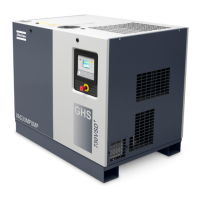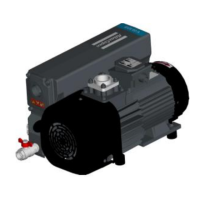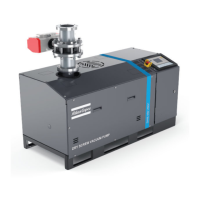Instruction book
12 6996 0227 40
2 General description
2.1 What is vacuum and how is flow rate understood
What is vacuum and how to denote
A vacuum is any pressure in a system that is below the ambient atmospheric pressure. It can be denoted
in absolute terms or in effective (gauge) terms:
mbar(a) – absolute pressure – denotes how much the pressure is above absolute zero vacuum.
(minus) mbar(e) – the effective or gauge pressure – denotes how much the pressure is below the local
atmospheric pressure.
Typical GHS pump working range (400 mbar(a) – 10 mbar(a))
Atmospheric pressure at sea level is roughly 1 bar or 1000 mbar. A typical working range for the GHS
pumps is 400 mbar(a) to 10 mbar(a). From the illustration it can be seen clearly that this range is also
equivalent to -600 mbar(e) and -990 mbar(e).
It is important to understand which type of reference is required before selecting a pressure instrument for
measuring the vacuum. It must be noted that the distinction doesn't matter for a pressure difference (delta P;
e.g. pressure loss), since it is always the result of subtracting 2 pressures (whether stated as absolute or
effective pressures).
Flow rate definitions
There are 2 common but different ways to denote flow rate in vacuum. The first one is based on the
displacement or volumetric flow rate and the second one is based on the throughput or mass flow rate.
Atlas Copco vacuum pumps use volumetric flow rate to denote performance, the unit being Am³/hr.
Displacement/volumetric flow rate
For the relevant pressure range, when a GHS pump operates at quasi constant motor speed (rotations per
minute) and since the compression chambers have fixed dimensions, the same volume of air is pumped
from inlet to outlet with falling pressure level. Over the relevant pressure range, this makes the volumetric
flow rate quasi independent of the vacuum level. It is the expression of the flow rate inside the piping at the
governing vacuum level (Am³/hr), and always higher than the throughput in mass flow rate.

